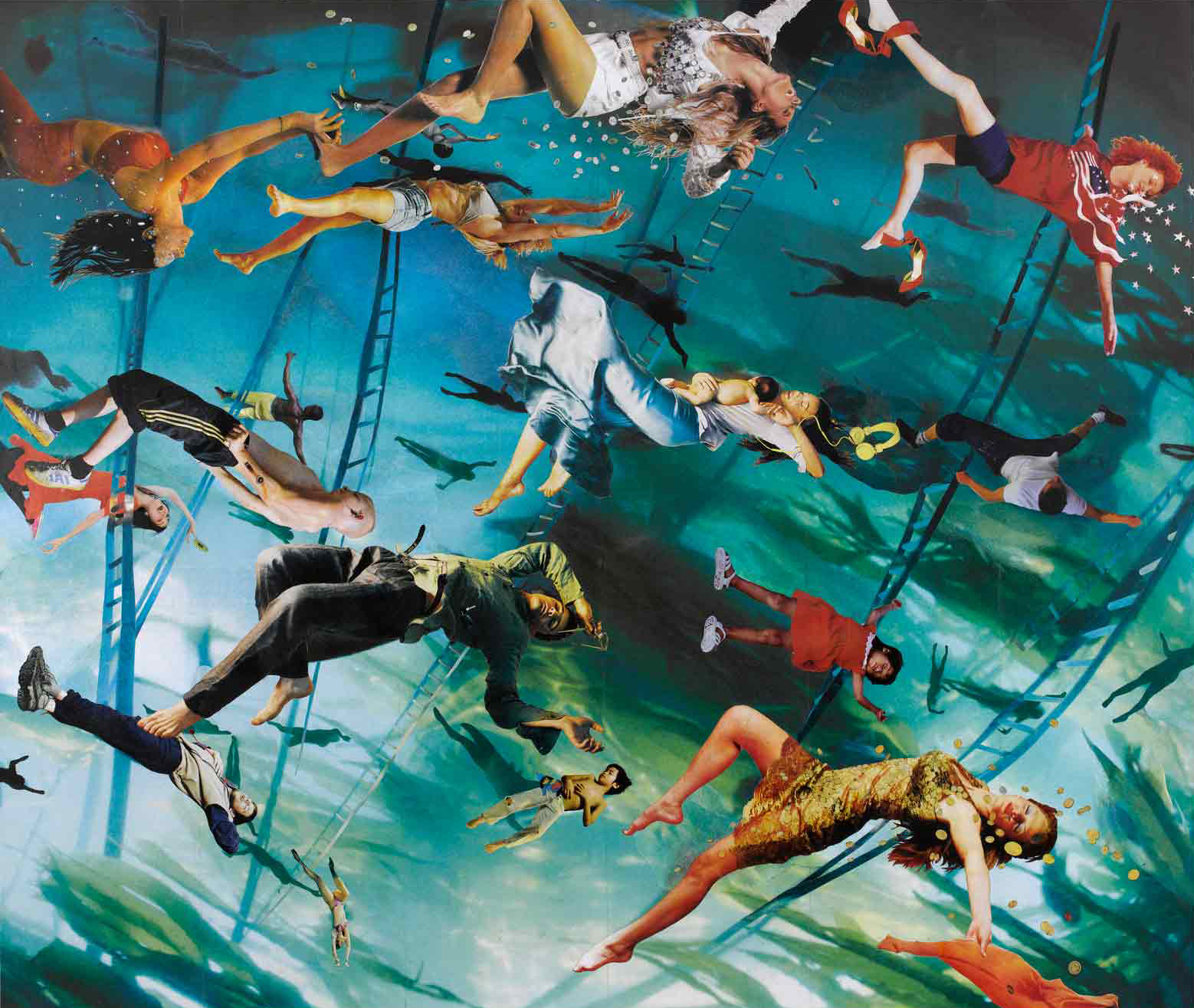Has he retreated to the safer places for conventional religious art, like above an altar or in the carefully crafted designs of church kneelers? Is he buried somewhere in the easy appropriation of sign and symbol, or Biblical reference? Does he speak through artists’ attempts to reference the spiritual, even if they don’t know what they mean? Did we lose him altogether back in the old pre-modern days?
I’d like in my research to attempt to answer these questions by way of artists who refer to explicitly religious themes in their work, particularly from/of the Judaeo-Christian faith since this is the obvious blind spot in the eye of Western art tradition. Along the way, I’m anticipating the following possible design:
- The thesis. Modernism set art on a pedestal, institutionalised the art gallery and lends to the whole sphere of fine or high art a lingering ‘bogus religiosity’ (to quote John Berger). The artist, the gallery, the work replace the priest, the temple and the icon (James Elkins). What vestiges of the sacred does modernism still carry forward, even as it has unquestionably rejected the faith-filled worldview? Can religious art ‘do’ representation of its subject at all given the self-reflexive turn that defined the progression of early twentieth-century isms (impressionism, cubism, abstract expressionism etc.)
- The antithesis. Postmodernism attempted to deconstruct the pedestal and in some ways (but not others) art devolved to the irreligious in pop art, op art, minimalism etc. If there was a landslide of signs and symbols, a linguistic turn (Richard Rorty) where certainties melted and in religion where anything goes, are we now at a level playing-field for religious art to be able to dissolve dogma and embrace the end of form? Is such work suddenly super-spiritual everywhere at once?
- The synthesis. Twenty-first century art isn’t afraid to look the Bible in the eye any more: exhibitions and cathedral residencies or commissions (including international celebrations of the KJV anniversary) and films/TV shows (The Passion, The Nativity) are increasingly frequent. Where is the locus for faith in these examples, and others that are less explicit, and what might this say about the latent theology that is carried in such work? Is it possible now to talk about religion and art in such a way as to honour both, without cheapening or nullifying the history of either?
Your comments are welcome!
Header image: Now there’s a nice contemporary sunset!, by James Stevenson.




Hi Sheona,
Interesting stuff. Couple of things that come to mind:
You mention that “Modernism set art on a pedestal, institutionalised the art gallery and lends to the whole sphere of fine or high art a lingering ‘bogus religiosity’.” I think that’s fairly true – high culture still tends to treat the art gallery as a sacred space (and I’m not sure postmodernism has done anything to dent such practice). But why is this ‘bogus religiosity’? The sacredness and awe sometimes accorded to art seem quite real to me. Does a Christian approach need to first desacralise the social position of art before it can be resacralised in a different manner?
Oh, and on Passion of the Christ: one of the odd things there is how Gibson simultaneously aimed for graphic realism alongside consciously referencing classicial paintings. Is this a tension you noticed? (or even a tension at all?).
Best wishes,
Dave
Hi Dave
Interesting questions, thanks! Berger’s context for ‘bogus religiosity’ is to do with the market and commercialisation of art, which I suppose it’s easy enough to see as opposite to ideals of religion and sincere faith. But you’re right, there isn’t necessarily such a discrepancy, as a book I’ve been reading recently suggests. Mark Taylor (in ‘Disfiguring: Art, Architecture and Religion’) talks about currency and the exchange relating to sacred and the sacrifice. The sacred as holiness-made-real becomes something current and valuable in our culture – of which just one measurement is financial value. Perhaps the Christian stake is in other measurements? Not necessarily seen as conflicting with the former?
Sheona
PS. Didn’t notice the new/old thing in Gibson’s Passion, which paintings was he going for? Could make for an interesting discussion re. collaged meaning and media.